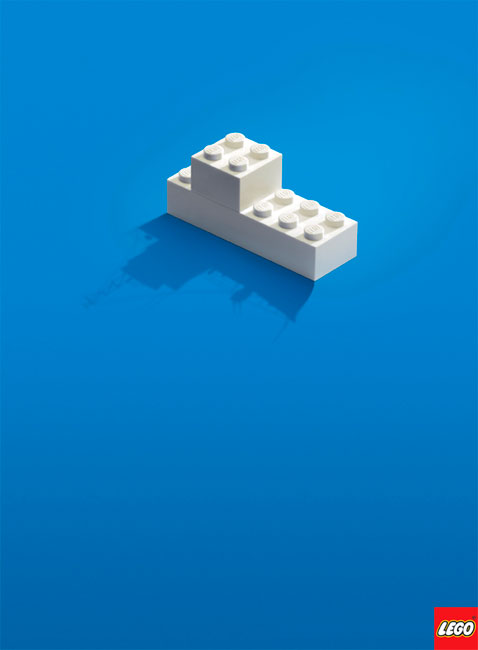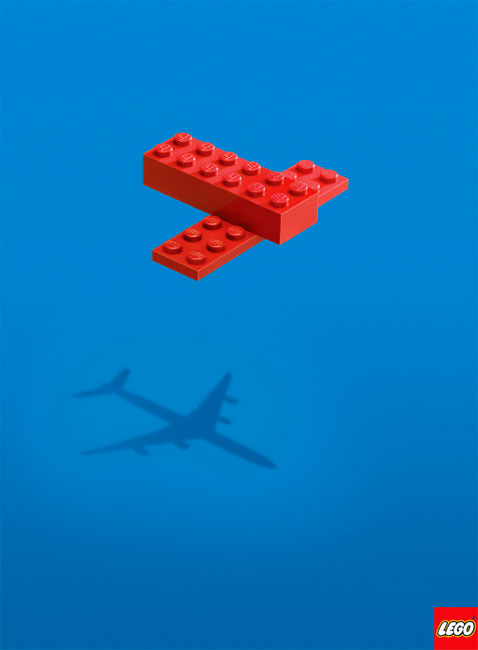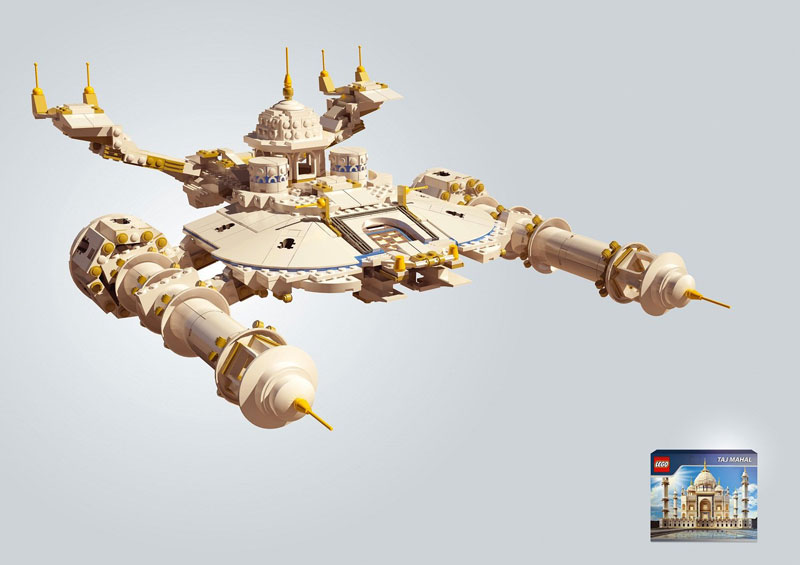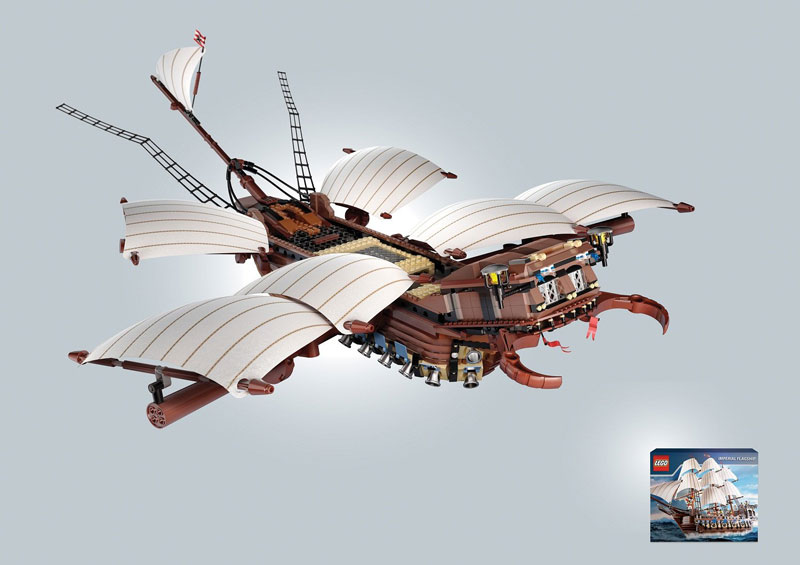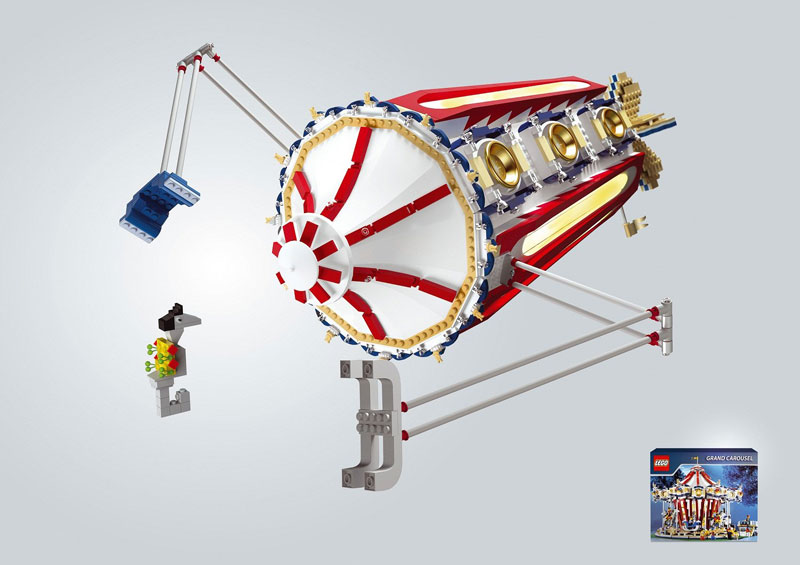
Ah, LEGO. Complete days of my life have I spend with these plastic building blocks. Yes, my LEGO characters suffered greatly at my fingertips. It’s been a while now but I still feel some of that passion for the brand deep inside. As the centrepiece of childhood fantasy and imagination, LEGO was a necessity… it provided the tools to build cars with weapons and fighter planes of unimaginable ferocity. It could deal easily with the limited powers of Action Man or the earth-bound Hotwheels. Anything was possible – as my juvenile view of the world was completed with my imagination.
Now, this blog post isn’t about my boyhood creations. It’s a case study about the famous LEGO brand versus the famous LEGO design. Which is more important?
The start
I’m not here to teach you a lengthy history lesson about the brand but let me tell you that LEGO was founded in 1949 and that the first LEGO toys where made of wood. After the advent of plastic however they branched out and eventually settled on the famous iconic brick they still have today.

The peak and decline
Now, fast forward to 1995. LEGO UK came out with a report that three-quarters of UK households owned LEGO toys – while across the developed world the brand claimed a 97% awareness rate. LEGO was at it’s peak but the company’s problems would begin just a few years later in the late 90’s. LEGO almost did innovation suicide when it ventured off on wild forays in an attempt to extend the brand.
Prime example is the Galidor line, launched in 2002. It was all about action figures. The figures had only a few parts that where interchangeable such as arms and legs but need no further building skills and required no further imagination. To give kids more reasons to buy them though, LEGO co-produced a TV show and videogames to add more story to it but it sparked only little interest.

Nick Bluetooth, protagonist of the Galidor theme.
Design running wild
The designers of LEGO where given free rein to come up with ever more imaginative creations. Of course they took that freedom with both hands. They conjured up complex models, many of which required the company to make new components. By 2004 the number of components had exploded, climbing from about 7,000 to 12,400 in just seven years.
Designers weren’t resonating with kids. The more they put their imagination in the design process, the less kids could. Just look at this… thing, from LEGO Alpha Team. It looked cool for the adult designers but kids hated it and quite rightly so.

The new approach diminished LEGO’s sales. In 1999 the brand had made a 274 million DKK profit (37 million euro), in 2000 this was turned into a loss of 831 million DKK (112 million euro).
This illustrates something though. There aren’t many toy companies around that have more brand power than LEGO. For three generations kids have build cars, cities and spaceships with the iconic bricks. But in one year time their sales evaporated. Is it the brand that failed, or the design?
Brand versus design
Looking back, Mads Nipper, the vice president of LEGO said: “Children are ruthless and very demanding about what they want to buy. If your offer doesn’t stack up, they will go somewhere else. Management was to blame. The same designers who were doing crappy products then are making world-class products today.”
Smith-Meyer, the head of the LEGO New Business Group says: “We didn’t do a lot of clever components. We did a lot of stylized pieces. We wanted to be like Philippe Starck (the French industrial, interior, and furniture designer famous for everything from juicers to motorcycles). LEGO had assumed it would flourish by giving its designers whatever pieces they asked for in order to unleash their creativity. Instead, costs soared as the models veered toward the esoteric.”
New direction
Clearly something was going wrong. LEGO didn’t directly know what, but in 2004 big changes where being made. Just as it was design that pushed LEGO to the precipice, it was design that helped the company back to the top. The biggest difference was that instead of rubber-stamping every request for new parts, LEGO put each new part to a vote among designers. Only the top vote getters would be added to the palette and those where the ones other designers imagined they could use as well.
This method drastically reduced parts, eliminating all the rarely used pieces, bringing the total number back to about 7,000, the same number as in 1997. Gone where the days when designers could do wherever their imagination would take them.
A risky move?
It was perhaps a gutsy move at the time, as it runs counter to the notion that design needs to be set free. When LEGO confined it’s designers it ran the risk of diminishing it’s competitive advantage. Except it didn’t. Gone where the complex components and the fire truck looked like a fire truck again. It allowed kids to build their own creations again – instead of being left with components that where already identified.
It may all sound counterintuitive but LEGO found that design, at least within it’s own walls, thrives with some constraints. It might send chills up the spines of some designers around the world but the component limits gave designers just enough direction to come up with some of the company’s most successful products to date.
More than bricks
So in November 2008, the European Court decided that the beloved LEGO brick design is no longer a corporate trademark. While LEGO imitators still can’t use the name, they are free to replicate the exact measurements and design of LEGO bricks with impunity. The EU clarified some time ago that purely functional design elements (in this case, the size of holes, studs, and bricks) does not qualify for trademark protection.
Since then, various rivals have emerged, making bricks that snap together with LEGO blocks at only a fraction of the cost. Montreal-based MEGA Brands is the current thorn in LEGO’s side. Companies such as Tyco Toys came before it with a similar strategy. But kids and their parents keep buying LEGO, and not simply because of their belief that the quality is better. They buy LEGO because the company offers the most creative collection of models, not merely a collection of bricks.
Nowadays
LEGO luckily understood that the design needs to leave some space for a kids creativity and imagination, to finish the picture. And that thinking, the celebration of creativity, has led to some great advertisements, over the years.


